Pierre Boulat
-
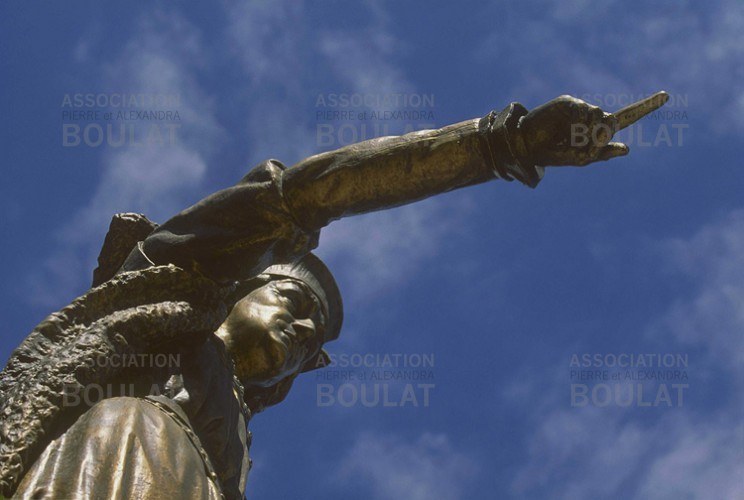
In Christopher Colombus footsteps
-
Venezuela - Statue of Christopher Columbus in Macuro, pointing at the horizon. -

In Christopher Colombus footsteps
-
Italy - Columbus was born in Genoa in 1451. The family home of Columbus stands in Piazza Dante, at the intersection of two streets, near the Porta Soprana. A few steps away, the San Andrea cloister (12th century) where Columbus was playing during his childhood. -
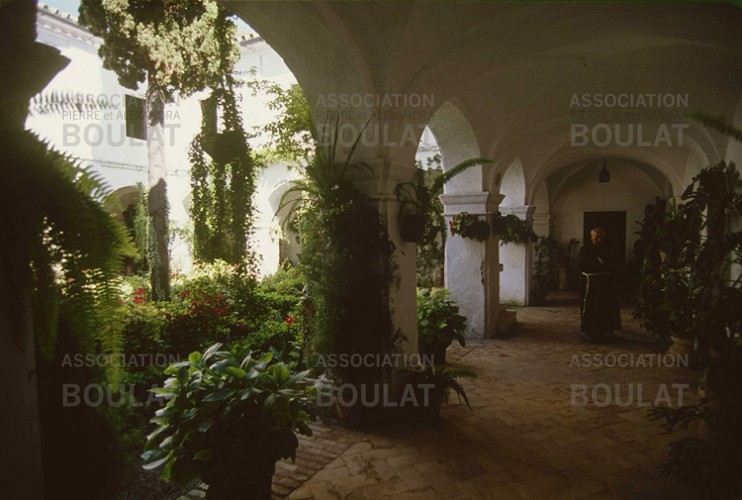
In Christopher Colombus footstepstophe Colomb
-
Spain - Monastery of La Rabida at Palos, on the Rio Tino, where Columbus stayed for 8 years and prepared his trip. -
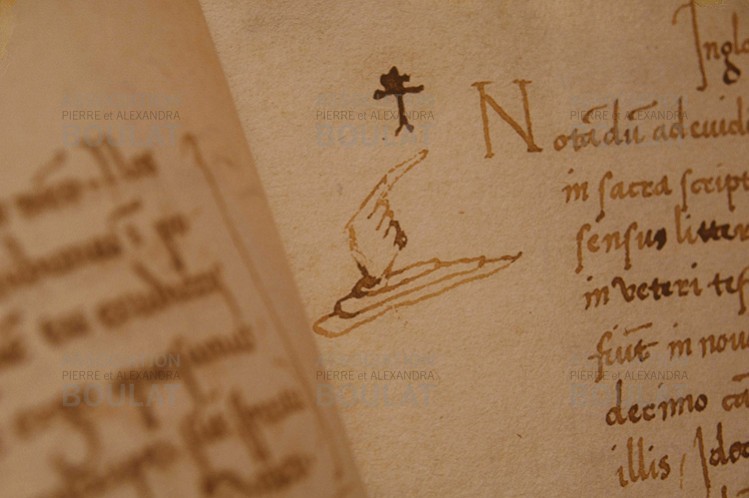
Sur les traces de Christophe Colomb
-
Spain - Columbine Library of the Cathedral of Seville. "The Book of Prophecy" written by Columbus before returning to his 4th trip, in which he compiled the Bible passages relating to his discoveries and projects. This is one of the few books written in his hand that still exist today. We can see the hand that drew Columbus to highlight significant passages and also appears on the Book of Wonders by Marco Polo who accompanied him during his travels. -
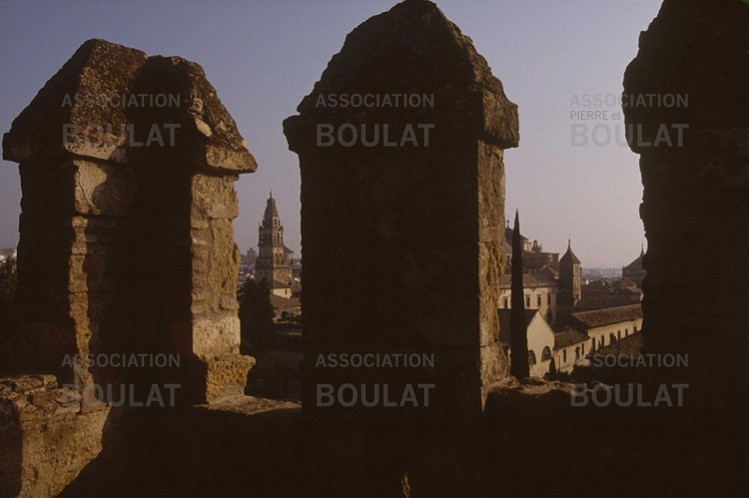
In Christopher Colombus footsteps
-
Spain - First interview with Isabel the Catholic in the Alcazar of Cordoba. Colomb spoke for the first time of his project in May 1486 -
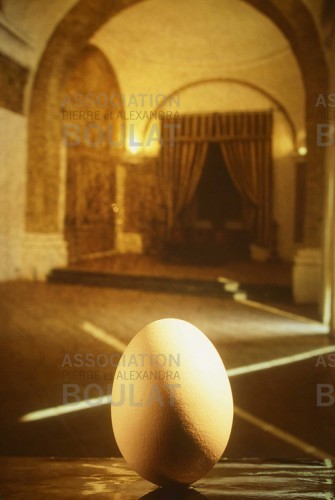
In Christopher Colombus footsteps
-
Spain - Given the doubts of the court, as regards the arguments presented by Columbus, he had the idea to persuade his audience that anything was possible, to hold an egg upright. The earth was round, one could, via the West, find the Eastern spice route, go for the gold mentioned by Marco Polo and bring the Gospel to these unknown lands. The Eldorado was within caravels. -

In Christopher Colombus footsteps
-
Spain - Sailors in Palos, descendants of those who went with Columbus to discover the New World. -
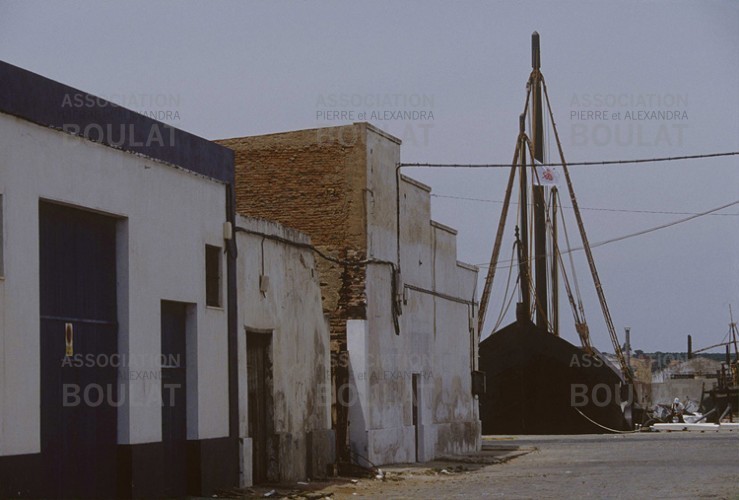
In Christopher Colombus footsteps
-
Spain - Construction replica caravels in the shipyard Isla Christina, in anticipation of the 5th centenary celebrations . Columbus had three months to arm the three caravels necessary for its shipping: Santa Maria, the Pinta and the Nina. -
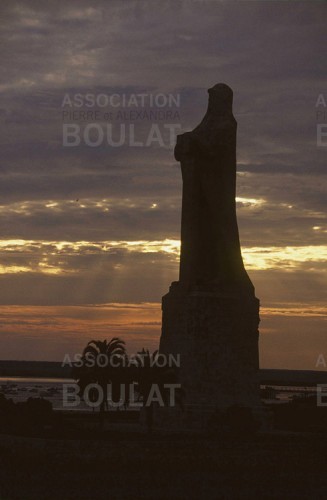
In Christopher Colombus footsteps
-
Spain - Columbus statue erected by the Americans, at the entrance to the estuary of the Rio Pinto Palos, the starting point of the three caravels, August 3, 1492. -
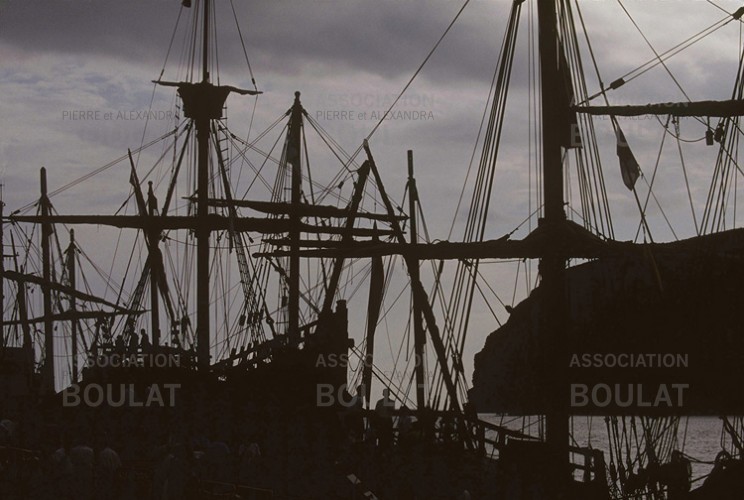
In Christopher Columbus footsteps
-
Spain - The new caravels at anchor in the port of San Sebastian, in the island of La Gomera. -
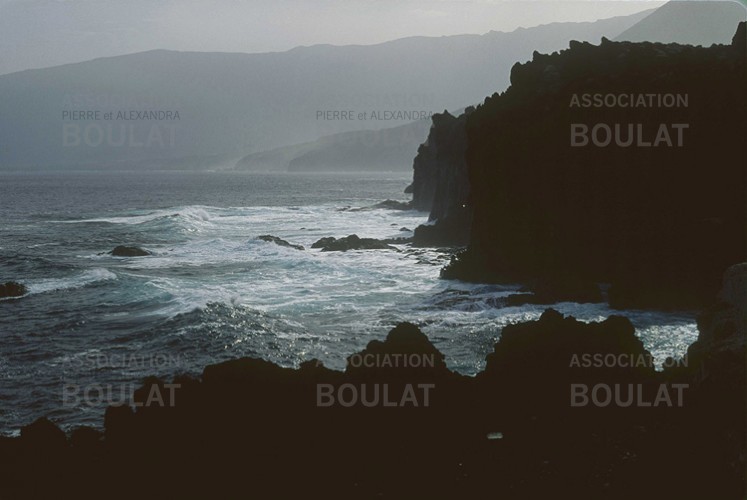
In Christopher Colombus footsteps
-
Spain - September 8, the small fleet rounded the cap heading Arenas Blancas, on the island of Hierro. With Hierro the land disappears. Heading due west now "everything is behind us, nothing before! "Columbus said his sailors before making the leap into the unknown. -
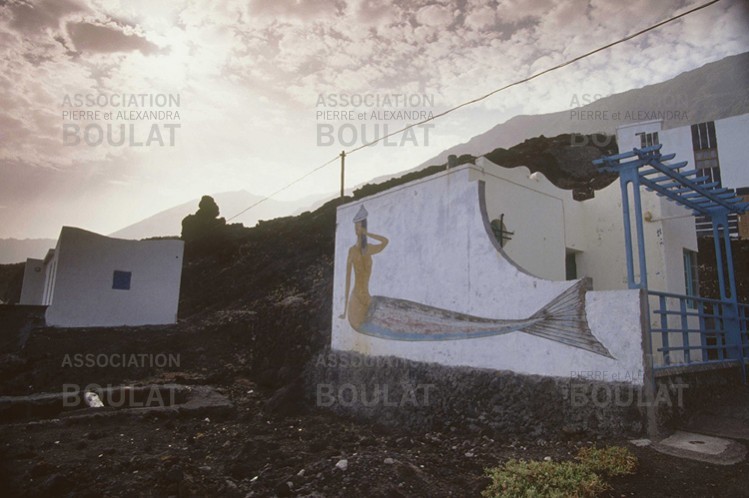
In Christopher Colombus footsteps
-
Spain - On the wall of a house in the village of Pozo de la Salud, Hierro, last volcanic rock in the Atlantic on the latitude 28 ¡ along the Tropic of Cancer, a siren defies browsers a wink eye. -
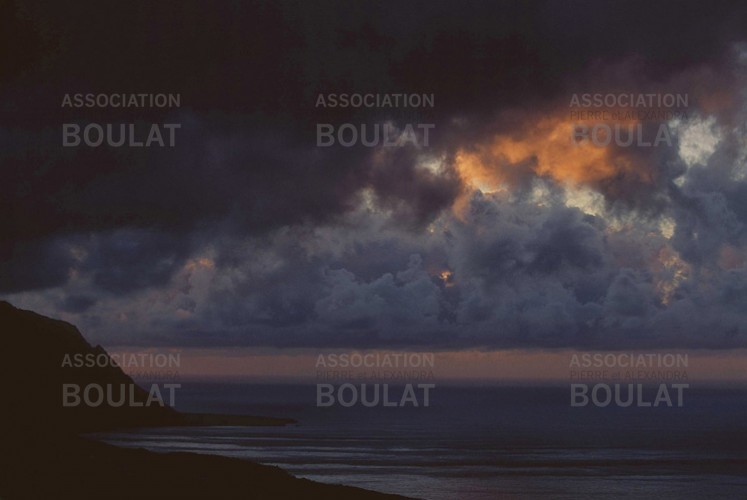
istopherIn Christopher
-
Spain - September 8, the small fleet rounded the cap heading Arenas Blancas, on the island of Hierro. With Hierro the land disappears. Heading due west now "everything is behind us, nothing before! "Columbus said his sailors before making the leap into the unknown. -

In Christopher Colombus footsteps
-
Spain - In the first light of dawn on 6 September, the "caravels set sail and leave the port of San Sebastian. In the background the volcano Teide on the island of Tenerife, the cone as a result of successive eruptions, grew 300 meters in 500 years. -
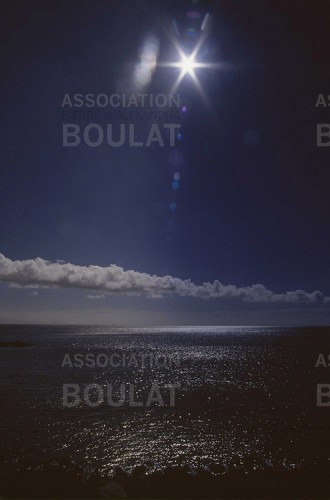
In Christopher Colombus footsteps
-
Spain - A few light clouds in the sky marking the presence of the trade winds, unknown at the time, breastfeeding while would lead Columbus straight to the Americas. -
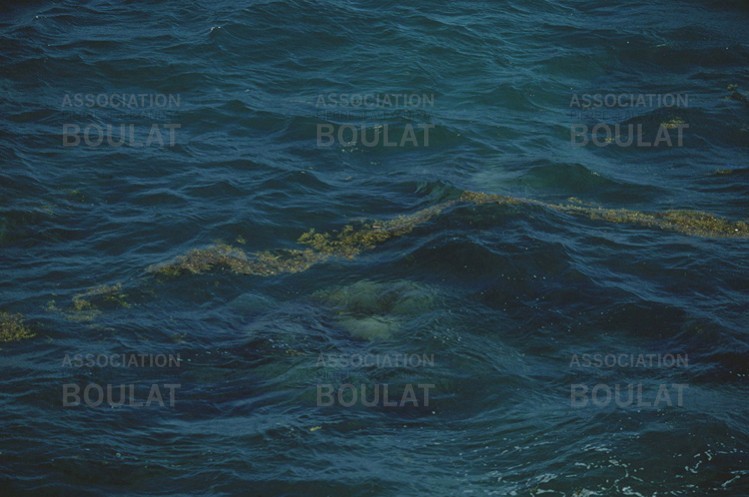
Sur les traces de Christophe Colomb
-
October 11, the sailors started to see dormant wood on the waves. -
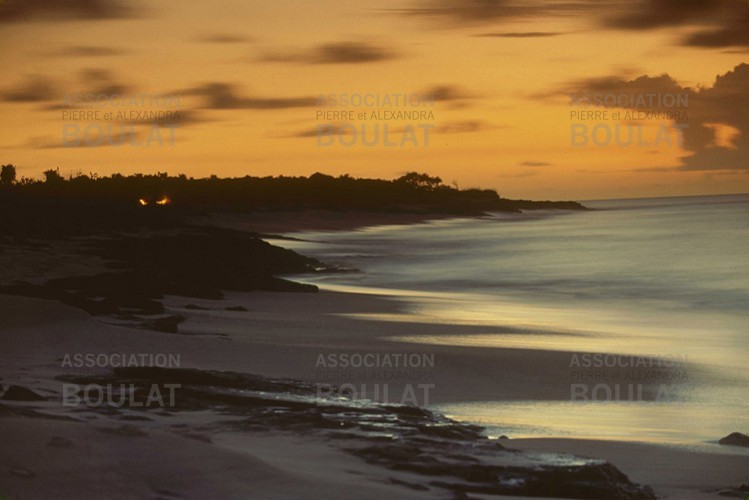
In Christopher Colombus footsteps
-
Bahamas - The crew waited for the first light of dawn to find an anchorage suitable. From the caravels they could see, through the forest, flickering lights that Indians had kindled. -
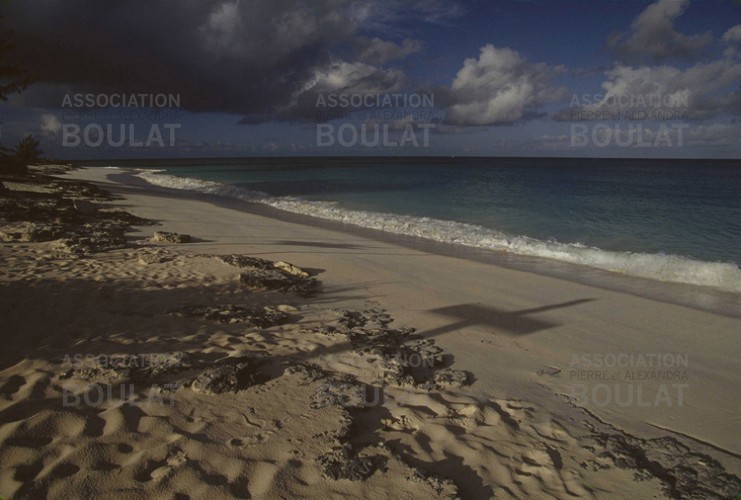
In Christopher Colombus footsteps
-
Bahamas - After skirting the southern coast, the small fleet went up to the north and three ships anchored in the bay of San Fernandez. It was noon Oct. 12, 1492. Columbus had discovered America. On the beach at Long Bay, looms the shadow of the cross erected in memory since. -
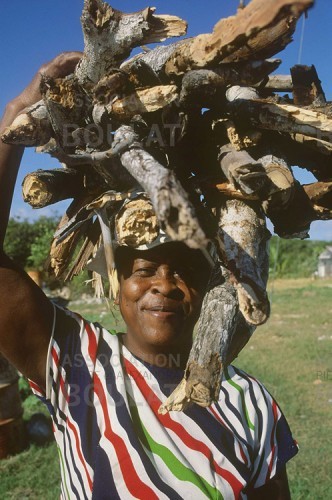
In Christopher Colombus footsteps
-
Bahamas - Current inhabitant of San Salvador. Quickly spread by new microbes brought by the Europeans and the cannibalism of some tribes of the Caribbean, the few indian living on the island completely disappeared shortly after the arrival of Columbus. They were later replaced by African slaves. -
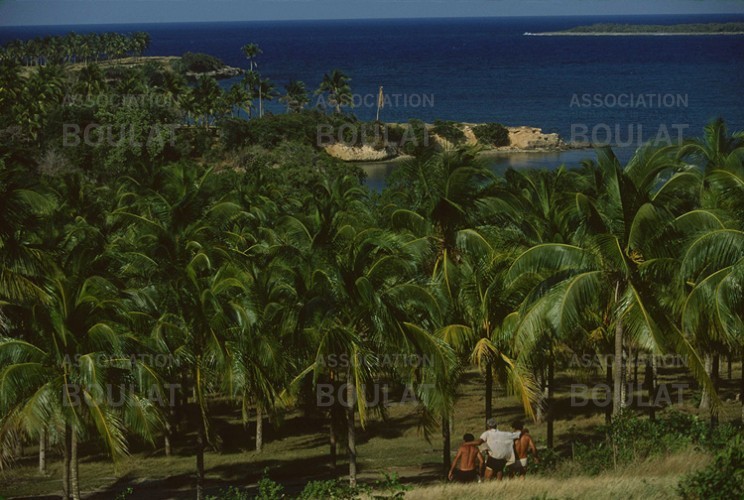
In Christophe Columbus footsteps
-
Cuba - After sneaking through the maze of islands that form the archipelago of the Bahamas, the three caravels reached Cuba, Sunday, Oct. 28, 1492. Columbus anchored in the Bay of Bariay asking the question: "Had he really arrived in Japan? " -
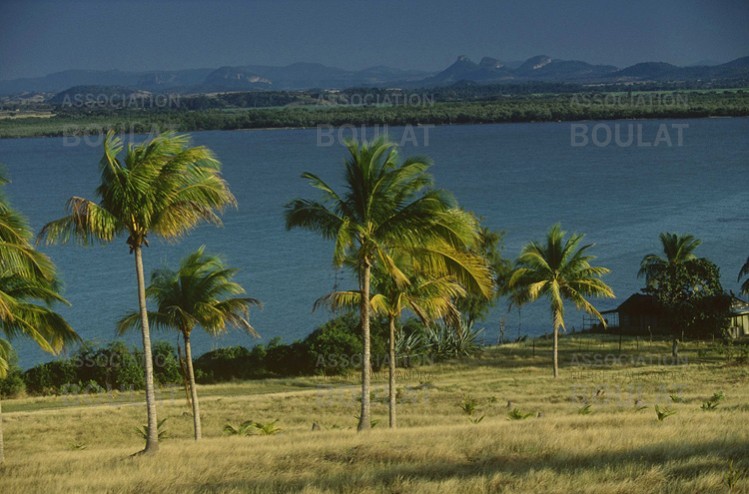
In Christopher Colombus footsteps
-
Cuba - After sneaking through the maze of islands that form the archipelago of the Bahamas, the three caravels reached Cuba, Sunday, Oct. 28, 1492. Columbus anchored in the Bay of Bariay asking the question: "Had he really arrived in Japan? " -
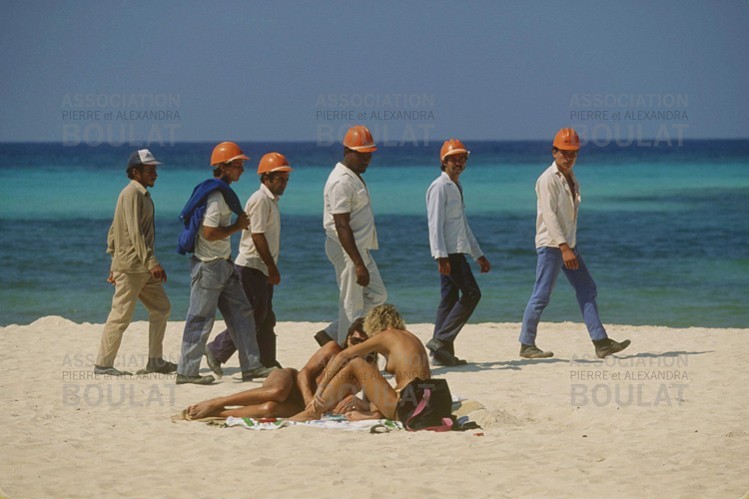
istopherIn Christopher
-
Cuba - At short distance, the new beach Guardalabarca. New encounter between two worlds: the curious glance of indigenous Cuban "compagneros" towards Western tourist -
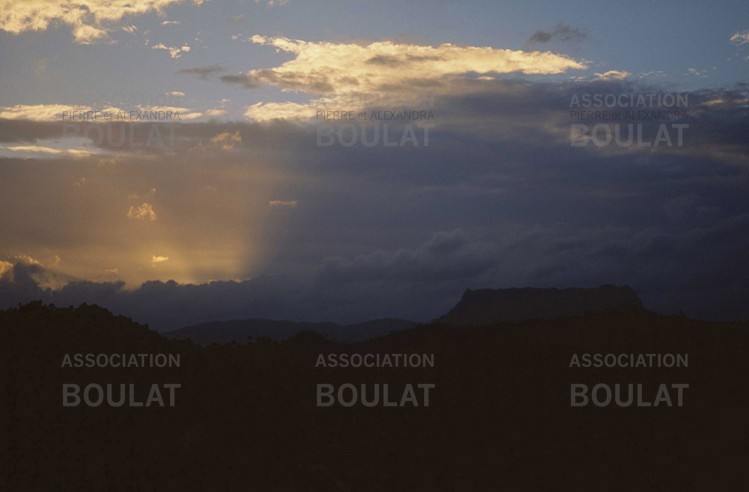
In Christopher Colombus footsteps
-
Cuba - The Yunque, Valhalla Indian, dominates the town of Baracoa, the first city founded by the Spanish in 1508, the most eastern of all Cuban cities. -
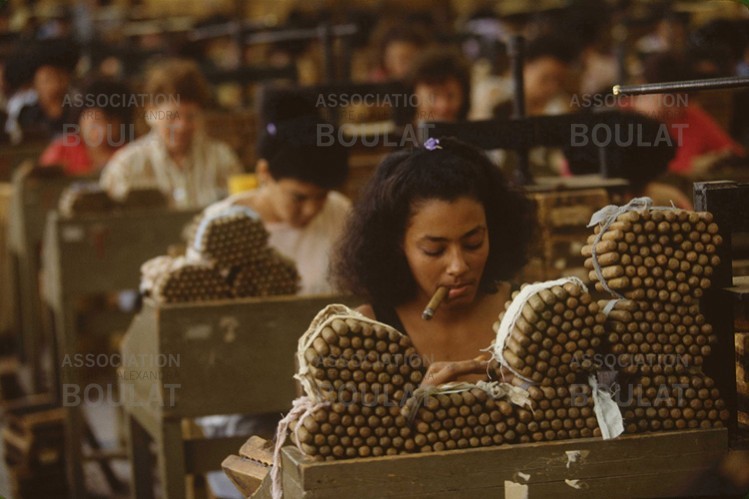
istopherIn Christopher
-
Cuba - tobacco, the great discovery of Columbus. Indian consumed either the infusions they breathed in procession, or as rolled leaves lit they breathed through the nostrils. In the Partagas factory in Havana, local women roll the tobacco in leaves. -
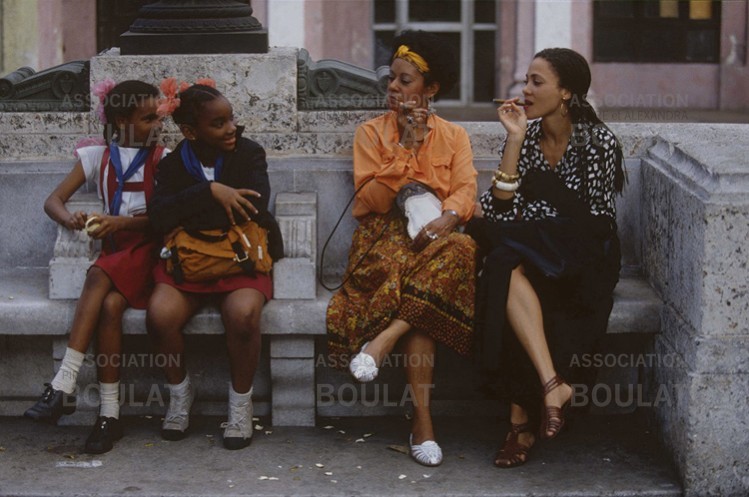
In Christopher Colombus footsteps
-
Cuba - Cuban on the Prado in Havana. It is not unusual to encounter Cuban women smoking a cigar. But this practice, which is becoming scarce, is the more often used in the cult of Santeria, Cuban voodoo. -
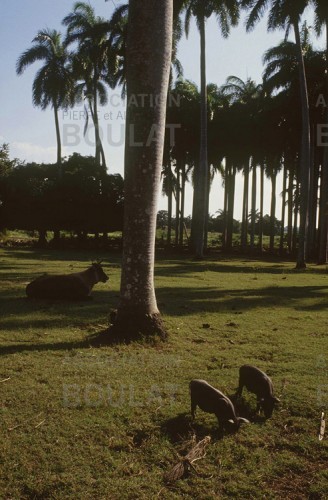
In Christopher Colombus footsteps
-
Cuba - Following Columbus the Spanish colonists who settled there brought with them, cows and pigs that are now part of the traditional landscape of the Cuban countryside. -
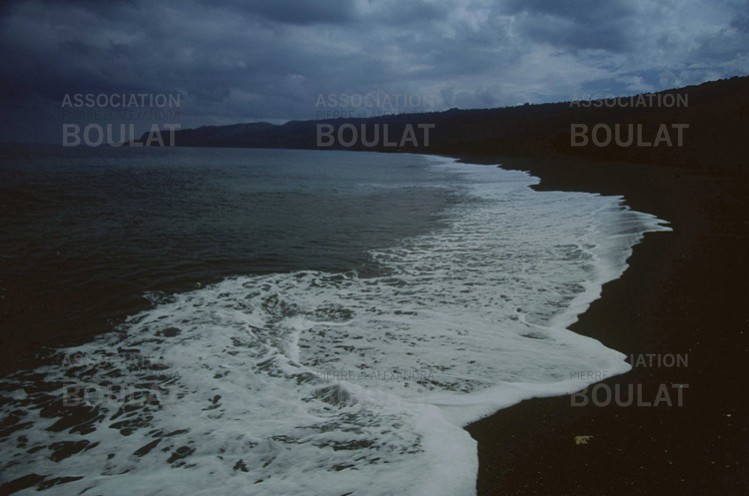
In Christopher Colombus footsteps
-
Cuba - Punta Maisi, at the eastern end of Cuba. The end of the inhabited land. In Columbus, it was with Cape St. Vincent in Portugal, the Alpha and the Omega, that is to say, the two ends of the known world. -
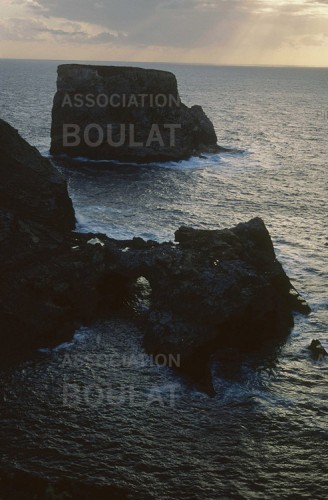
Sur les traces de Christophe Colomb
-
Portugal - Cape St. Vincent in Portugal is to Columbus, with Cape Maisi Cuba, the Alpha and the Omega of the inhabited earth. -
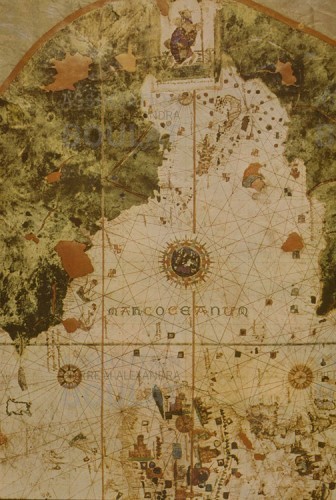
In Christopher Colombus footsteps
-
Haiti - 15th century map showing for the first time the New World. -
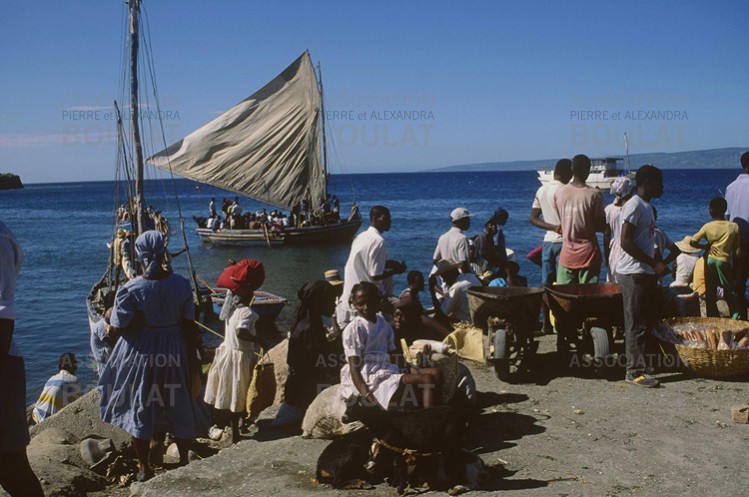
In Christopher Colombus footsteps
-
Haiti - The Mole Saint Nicolas, western tip of the island Haiti. Disappointed by the Cuban Eldorado, Columbus had decided to sailing again. On 6 December he addressed Haiti and discovered with amazement that the island was so similar to Spain that he named it Hispaniola (Spanish Island). -
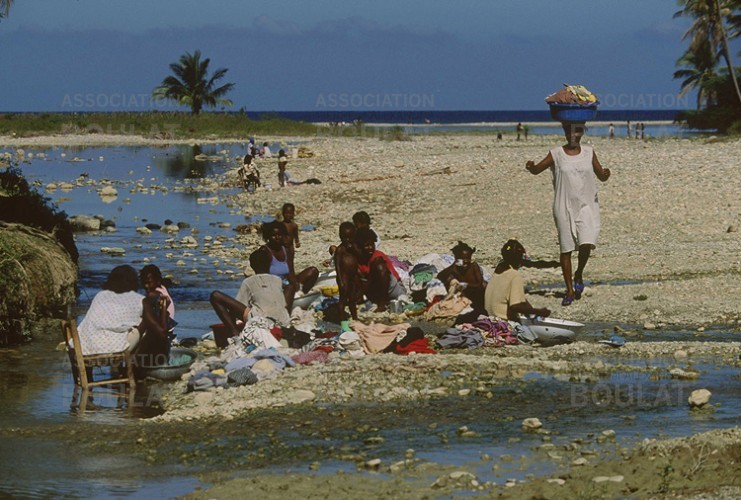
In Christopher Colombus footsteps
-
Haiti - Columbus and his sailors stayed a week at Bahia de Los Mosquitos they named it as having been attacked by a cloud of mosquitoes. -
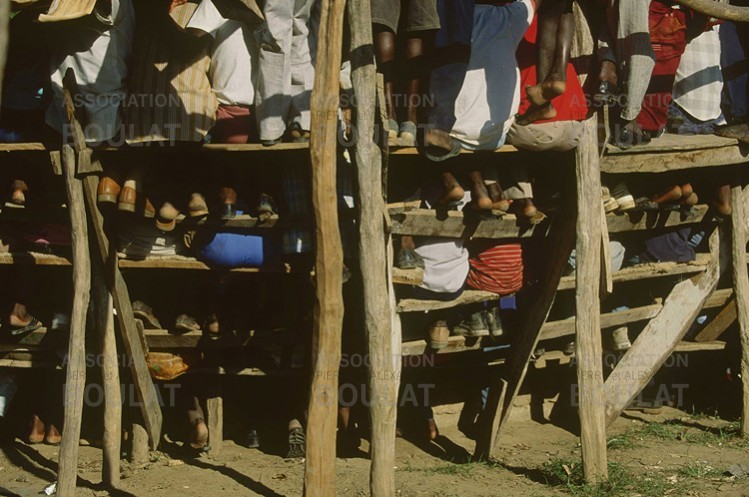
In Christopher Colombus footsteps
-
Haiti - Spectators, a cockfight, leisure imported by the Spanish. -
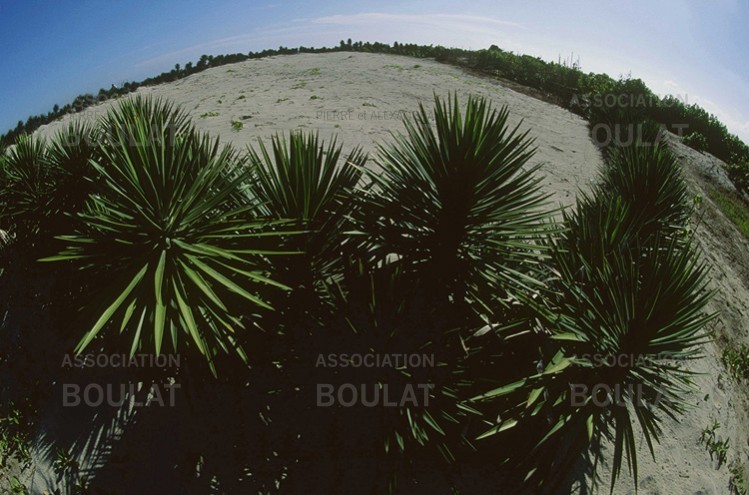
In Christopher Colombus footsteps
-
Haiti - The drama of the Navidad. On Christmas Eve 1492, after the careless mistake of a young sailor, the Santa Maria ran aground on a reef off coral at a place called "Lemonade Seaside." With the debris of the caravel, completely dismantled, Columbus decided to build a fort, which took the name of Navidad (now Trash Brle) and leave a group of about thirty men. The place is 500 years later, buried under seven meters of dunes and alluvial. -
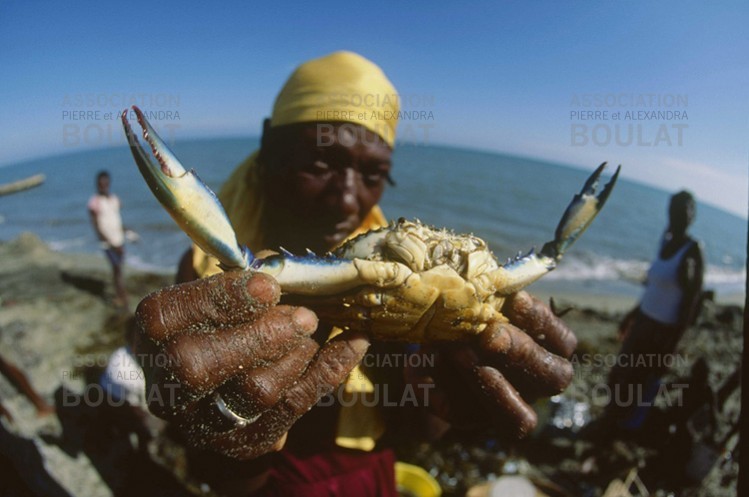
In Christopher Colombus footsteps
-
Haiti - Navidad. Large yellow crab familiar Indian food. When Columbus returned to the scene less than a year later, he founded no survivors. -
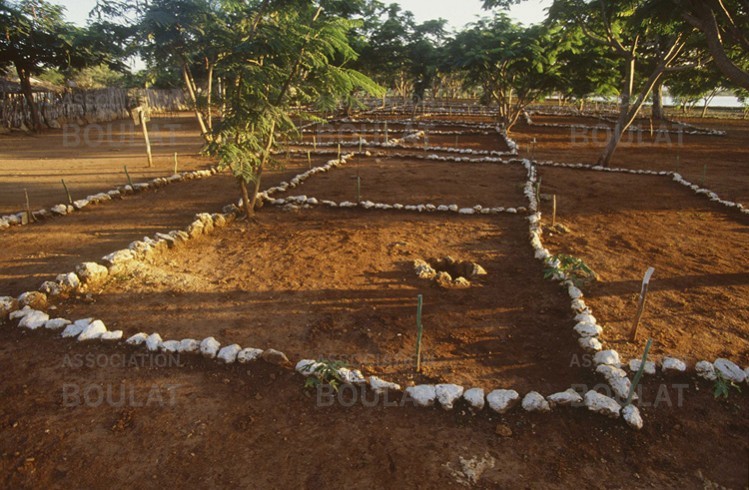
In Christopher Colombus footsteps
-
Haiti - Isabela, named in honor of Queen Isabella, was the first Christian settlement in the New World. On January 2, 1494, as he began his second voyage with 17 ships, Columbus landed there the 1200 Spaniards who had come to settle with cows, pigs, horses, seed and Andalusian cactus for fencing. Their seeds carried by the wind, have 500 years invades the Caribbean and Mexico. On January 6, a mass dedicated the foundation of the city, the excavations undertaken by the government of Santo Domingo, and recently uncovered. -
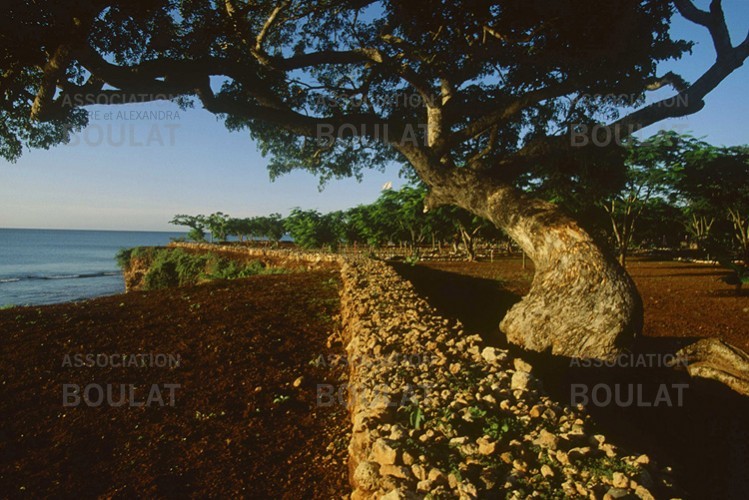
In Christopher Colombus footsteps
-
Haiti - Isabela, named in honor of Queen Isabella, was the first Christian settlement in the New World. On January 2, 1494, as he began his second voyage with 17 ships, Columbus landed there the 1200 Spaniards who had come to settle with cows, pigs, horses, seed and Andalusian cactus for fencing. Their seeds carried by the wind, have 500 years invades the Caribbean and Mexico. On January 6, a mass dedicated the foundation of the city, the excavations undertaken by the government of Santo Domingo, and recently uncovered. -
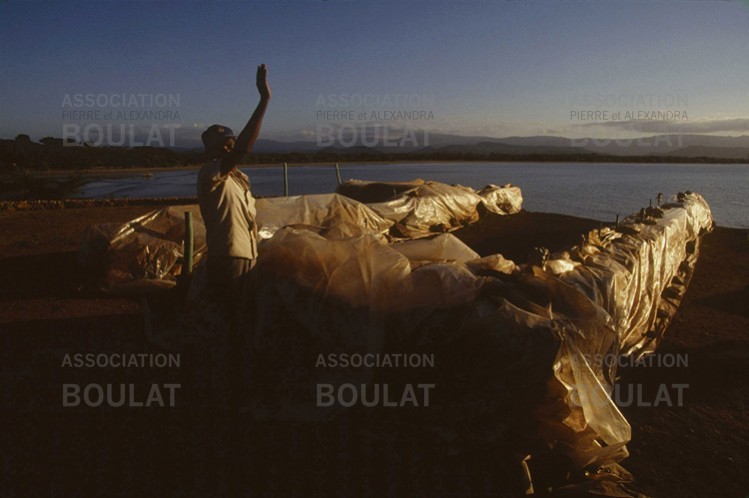
In Christopher Colombus footsteps
-
Haiti - Isabela, named in honor of Queen Isabella, was the first Christian settlement in the New World. On January 2, 1494, as he began his second voyage with 17 ships, Columbus landed there the 1200 Spaniards who had come to settle with cows, pigs, horses, seed and Andalusian cactus for fencing. Their seeds carried by the wind, have 500 years invades the Caribbean and Mexico. On January 6, a mass dedicated the foundation of the city, the excavations undertaken by the government of Santo Domingo, and recently uncovered. -

In Christopher Colombus footsteps
-
Santo Domingo - The Green campaign, which delighted Columbus. -
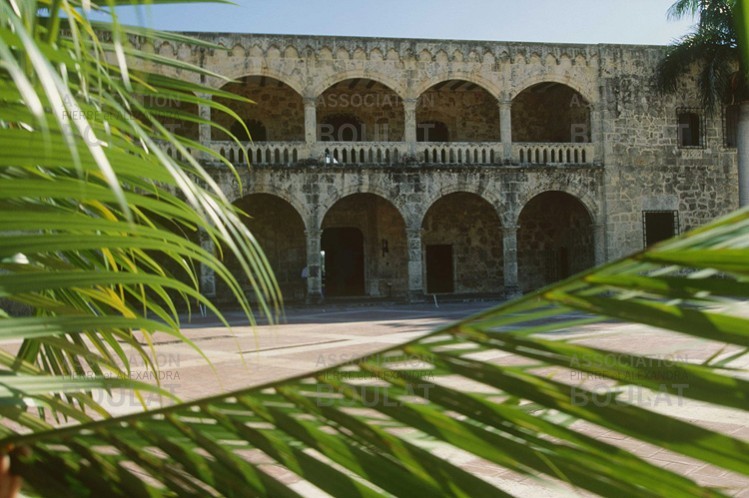
In Christopher Colombus footsteps
-
Santo Domingo - The Columbus Palace built by Columbus' son, Diego, who was appointed governor of Santo Domingo, after the death of his father. Columbus himself landed for the first time in the capital founded by his brother Bartolomeo in August 1498, during his third voyage -
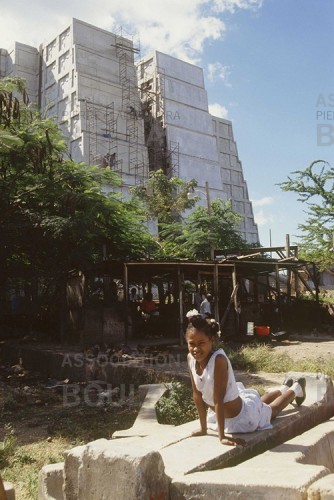
Sur les traces de Christophe Colomb
-
Santo Domingo - Santo Domingo construction of a gigantic mausoleum flagship 23 million dollars worth. The ashes of Columbus will be transferred during the commemoration of the 500th anniversary of the discovery of America. -
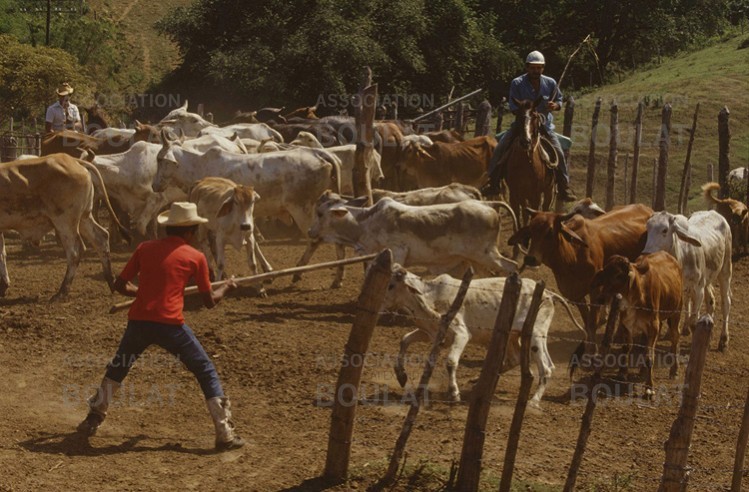
In Christopher Colombus footsteps
-
Santo Domingo - Ranch in the Sierra Cristal. Cubans have not stopped since raising livestock. -
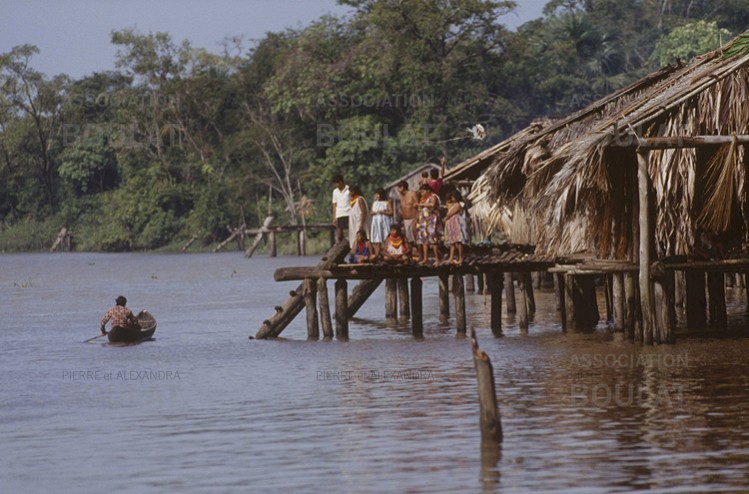
In Christopher Colombus footsteps
-
Venezuela - It is in Venezuela, approaching the mouth of the Orinoco during his 3rd voyage, that Columbus, for the first time, had the feeling of having touched a continent. Several moorings put him in contact with the very poor and aggressive Indian fishermen; crews had to wipe several times volleys of arrows. Five hundred years have not changed the current way of life of their descendants, the Guaraounos, now peacefully occupying the delta of the Orinoco. The villages on stilts, here Guayo, recalling the Venetian lagoon gave the title of Venezuela to the new land. -
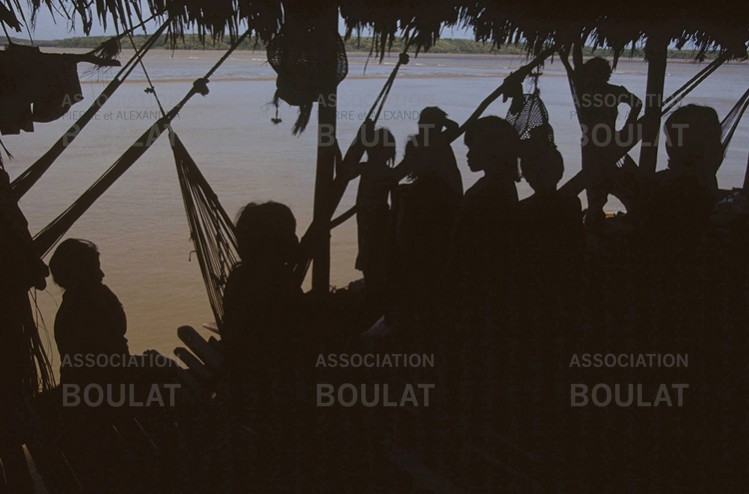
In Christopher Colombus footsteps
-
Venezuela - It is in Venezuela, approaching the mouth of the Orinoco during his 3rd voyage, that Columbus, for the first time, had the feeling of having touched a continent. Several moorings put him in contact with the very poor and aggressive Indian fishermen; crews had to wipe several times volleys of arrows. Five hundred years have not changed the current way of life of their descendants, the Guaraounos, now peacefully occupying the delta of the Orinoco. The villages on stilts, here Guayo, recalling the Venetian lagoon gave the title of Venezuela to the new land. -
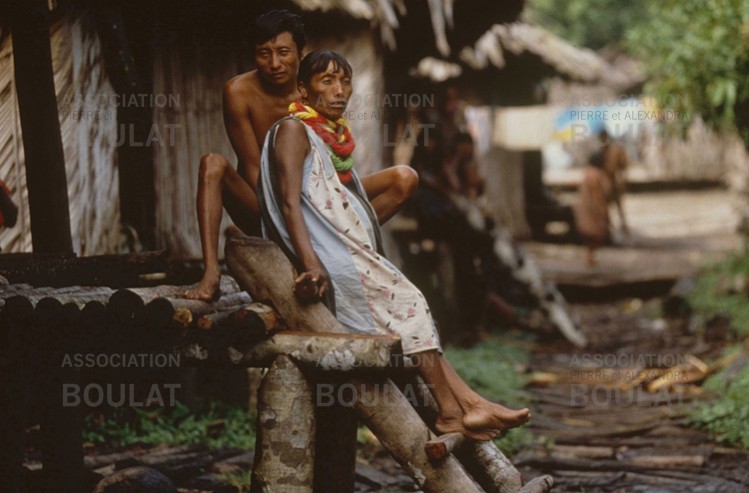
In Christopher Colombus footsteps
-
Venezuela - It is in Venezuela, approaching the mouth of the Orinoco during his 3rd voyage, that Columbus, for the first time, had the feeling of having touched a continent. Several moorings put him in contact with the very poor and aggressive Indian fishermen; crews had to wipe several times volleys of arrows. Five hundred years have not changed the current way of life of their descendants, the Guaraounos, now peacefully occupying the delta of the Orinoco. The villages on stilts, here Guayo, recalling the Venetian lagoon gave the title of Venezuela to the new land. -
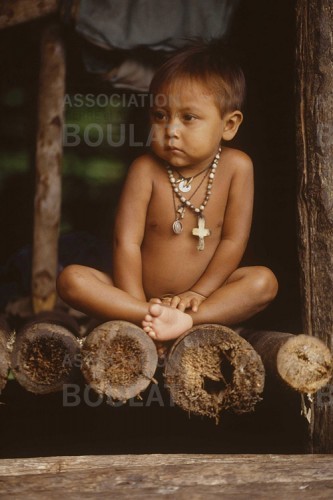
In Christopher Colombus footsteps
-
Venezuela - It is in Venezuela, approaching the mouth of the Orinoco during his 3rd voyage, that Columbus, for the first time, had the feeling of having touched a continent. Several moorings put him in contact with the very poor and aggressive Indian fishermen; crews had to wipe several times volleys of arrows. Five hundred years have not changed the current way of life of their descendants, the Guaraounos, now peacefully occupying the delta of the Orinoco. The villages on stilts, here Guayo, recalling the Venetian lagoon gave the title of Venezuela to the new land. On the chest of this young Guaraounos, gris-gris next to the christian cross. -
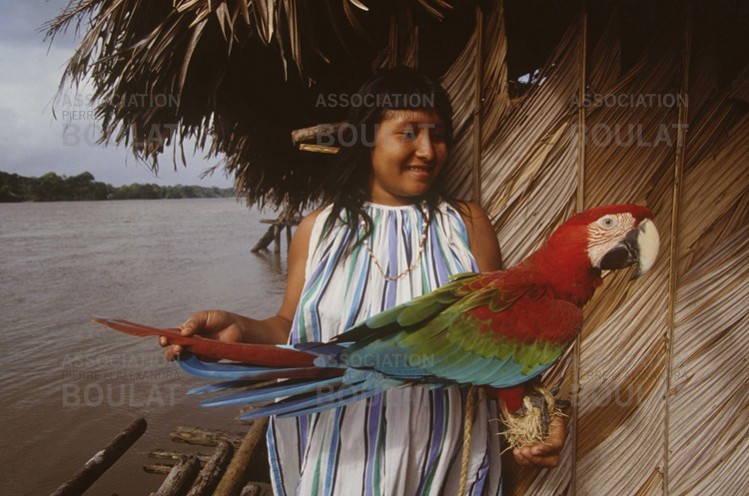
In Christopher Colombus footsteps
-
Venezuela - It is in Venezuela, approaching the mouth of the Orinoco during his 3rd voyage, that Columbus, for the first time, had the feeling of having touched a continent. Several moorings put him in contact with the very poor and aggressive Indian fishermen; crews had to wipe several times volleys of arrows. Five hundred years have not changed the current way of life of their descendants, the Guaraounos, now peacefully occupying the delta of the Orinoco. The villages on stilts, here Guayo, recalling the Venetian lagoon gave the title of Venezuela to the new land. A young Guaraounos indian with a parrot bird. -
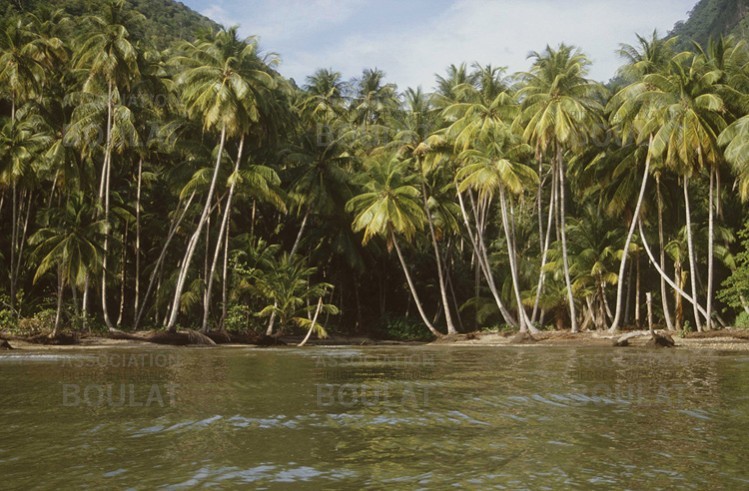
In Christopher Colombus footsteps
-
Venezuela - It is in Venezuela, approaching the mouth of the Orinoco during his 3rd voyage, that Columbus, for the first time, had the feeling of having touched a continent. Several moorings put him in contact with the very poor and aggressive Indian fishermen; crews had to wipe several times volleys of arrows. Five hundred years have not changed the current way of life of their descendants, the Guaraounos, now peacefully occupying the delta of the Orinoco. The villages on stilts, here Guayo, recalling the Venetian lagoon gave the title of Venezuela to the new land. -
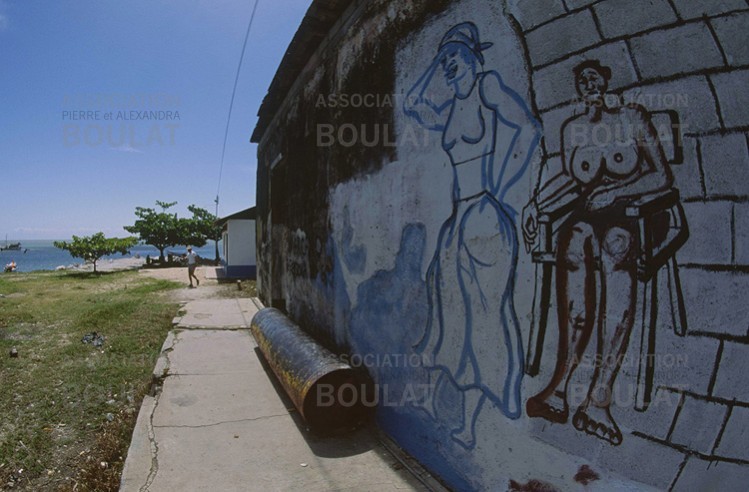
In Christopher Colombus footsteps
-
Venezuela - More than 5000 km from the siren of Hierro, on the wall of a house Macuro, a woman awaits the arrival of a traveler on the horizon -
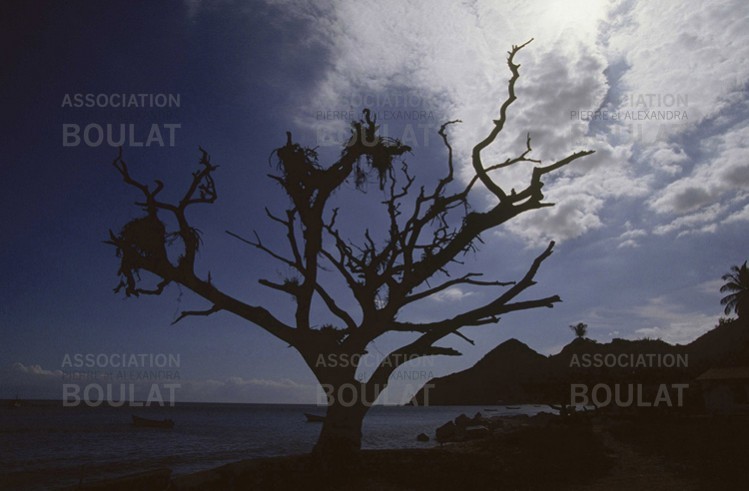
In Christopher Colombus footsteps
-
Venezuela - Macuro harbor. -

In Christopher Colombus footsteps
-
Venezuela - Rio Balcony in Macuro where Columbus replenished supply of fresh water. -

In Christopher Colombus footsteps
-
Venezuela - Cubagua Island, not far from Margarita island was rich in pearl oysters. For over a century, Spain drew enormous wealth of these pearls that Columbus was the first to see, but which he did not pay attention. On the remains of the Spanish mole along the city now submerged, a fisherman secures his boat. -
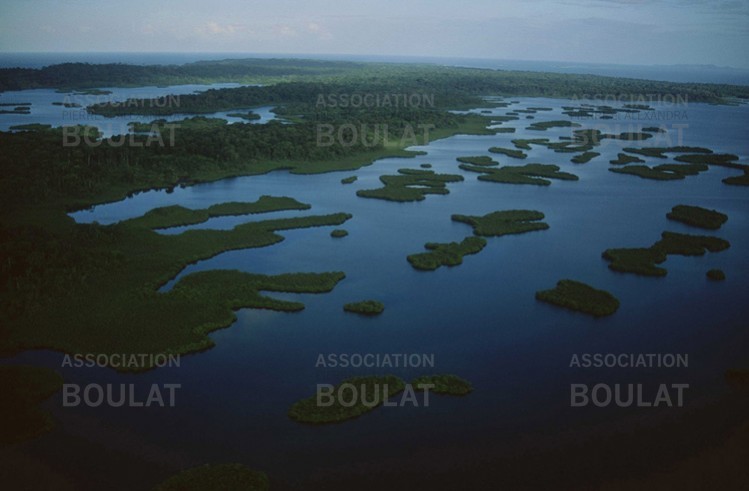
Sur les traces de Christophe Colomb
-
Panama - Bocas del Toro. The mining region was called Veragua. Two days walking in hostile terrain, Bartolomeo was wounded by an arrow, Columbus reached malaria; boats rot, morale was at zero. This is the great failure of the dream of Eldorado. Veragua only brings to Columbus the title of "Duke of Veragua" whose descendants still honor today. -
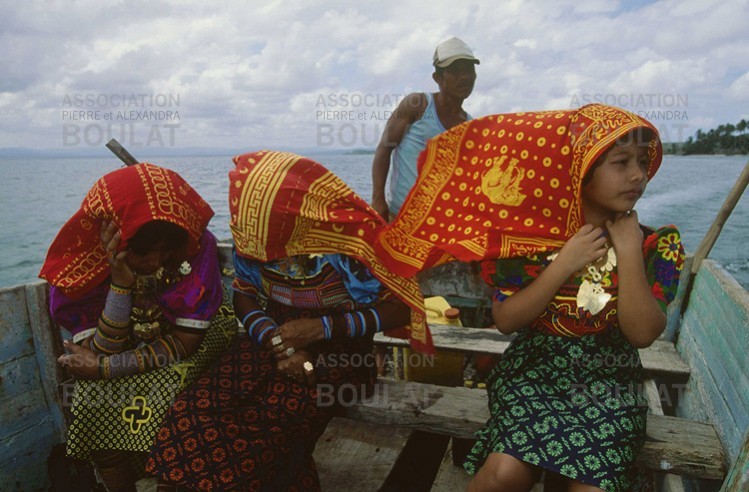
In Christopher Colombus footsteps
-
Panama - 4th and last voyage. October 1502, Columbus reached Panama. One could see gold among many of the natives, who wore large gold discs on their chest. Today, the Kuna Indians, settled along the 350 islands of the archipelago of San Bias, exhibit on their chest bird with outstretched wings, admiring symbol of the bird's flight, the solar disc as earrings. The dark line separating the two sides of their face marks the dividing line of beauty and evil. -
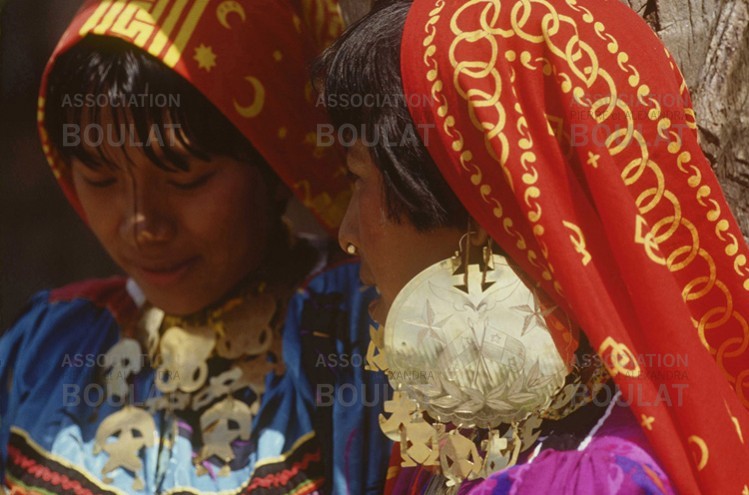
In Christopher Colombus footsteps
-
Panama - 4th and last voyage. October 1502, Columbus reached Panama. One could see gold among many of the natives, who wore large gold discs on their chest. Today, the Kuna Indians, settled along the 350 islands of the archipelago of San Bias, exhibit on their chest bird with outstretched wings, admiring symbol of the bird's flight, the solar disc as earrings. The dark line separating the two sides of their face marks the dividing line of beauty and evil. -

In Christopher Colombus footsteps
-
Panama - Colon Statue of Columbus. Grand Admiral of the Ocean Sea, here with a strong resemblance to the American actor Marlon Brando, is listed as the protector of the Indians that in exchange of their faith he sent into slavery. -
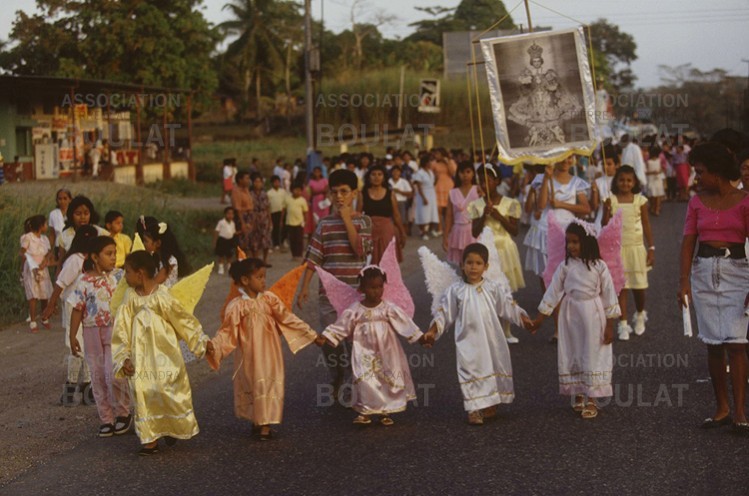
In Christopher Colombus footsteps
-
Panama - Religious procession through the streets of Colon. Columbus never found the gold he was looking for. He never knew he had discovered a continent. Thinking he was the messenger of God, he was the first in a long line of missionaries to bring the Christian faith to the new world. -
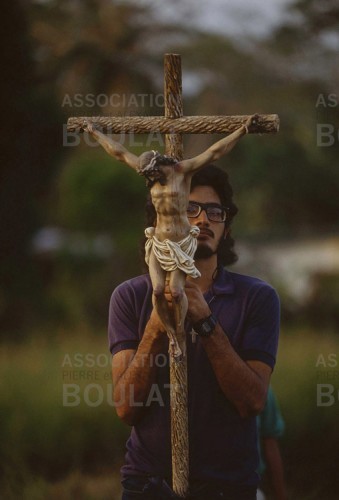
In Christopher Colombus footsteps
-
Panama - Religious procession through the streets of Colon. Columbus never found the gold he was looking for. He never knew he had discovered a continent. Thinking he was the messenger of God, he was the first in a long line of missionaries to bring the Christian faith to the new world. -
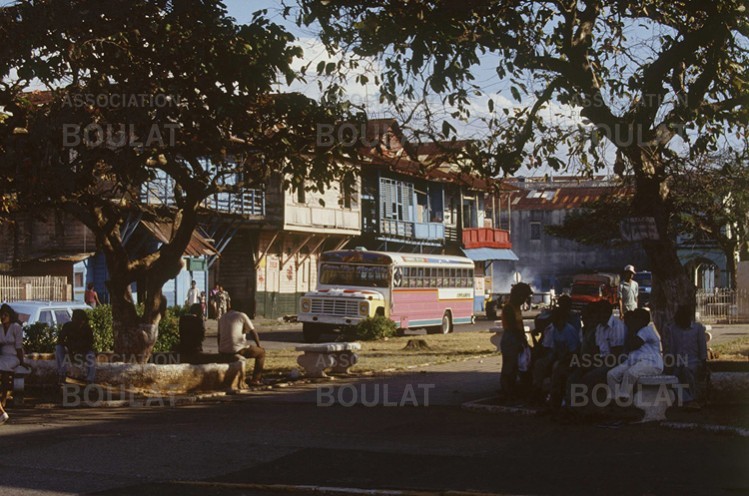
In Christopher Colombus footsteps
-
Panama - Colon harbor north of the canal. This city, where insecurity is total, gave his name to the word "colonialism". -
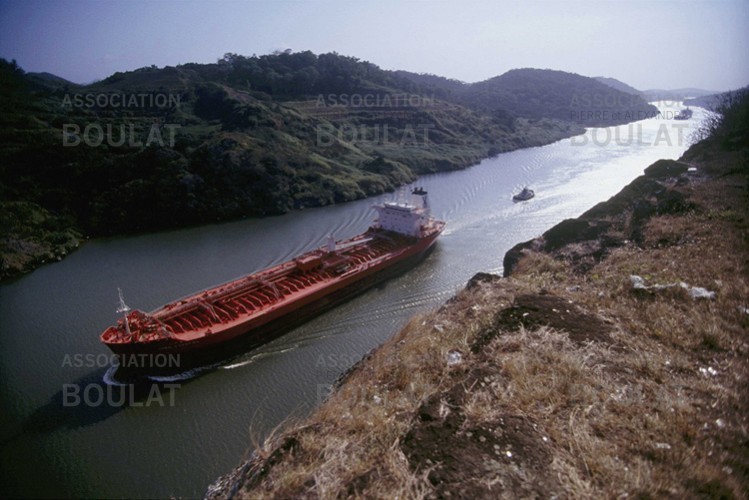
In Christopher Colombus footsteps
-
Panama - The Indians had spoken to Columbus of a great ocean extending beyond the mountains. Believing he was in Cochin, he identified the sea from India and thought he would soon find the passage to the Indies. Nine days walk westward through the forest and the mountain would have enabled him to discover the Pacific and understand that he had discovered a continent. Lacking the means to continue by land, he gave up to push further and stopped at one of the mouths of what is today the Panama Canal. -
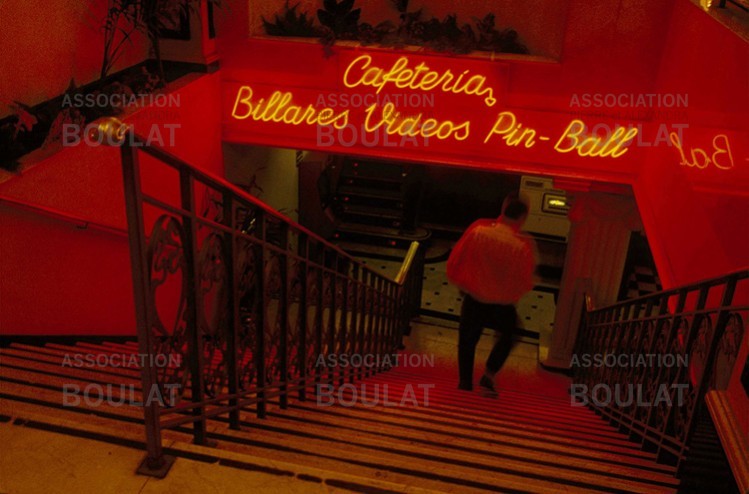
In Christopher Colombus footsteps
-
Valladolid - Columbus died in Valladolid on May 20, 1506. He was buried in the crypt of the Franciscan monastery which stood not far from his home. The monastery no longer exists. On his site you can see today a room for pinball and video games. -

In Christopher Colombus footsteps
-
In 1537, at the request of Maria de Toledo, widow of his son Diego, Columbus's remains were transferred to the Cathedral of Santo Domingo, along with those of his son and his brothers. -

In Christopher Colombus footsteps
-
Two centuries later, Columbus having finally been restored, it was decided to transfer his remains in a mausoleum in the cathedral of Seville. Was it really those of Columbus or those of one of his companions? Santo Domingo or Seville? The doubt remains. Neither of these two cities are agreeing to analyze the remains, the two capitals being honored to have the remains of Columbus.
Christopher Columbus
On Friday, october 12, 1492, in the first light of dawn trhee caravels, Santa Maria, ¨Pinta and Nina, anchored at the foot of the big rock which his the Island of San Salvador, at San Fernando bay in the Bahamas. On the white sand beach, a handful of native naked and unarmed were pointing with their finger “the houses on the water” and watched, stunned, the group of men who had just arrived, waving banners, wearing big hats with feathers and pretend protected by “turtle shells”.
After 36 days through the unknown ocean, fro september 6 until september 12, the europeans, headed by Christopher Columbus, had discover America and the event, described by De Las Casas, was nothing less than the meeting of two workds : the old and the new. During thousands of years, millions of men had lived, ignoring other millions of men existed on the same world and a hudge continent stretched between two oceans also unknown.


